After emptying the dust bag last night, Yukari and I spent some time using the bandsaw. She cut some nice, easy plywood completely without incident. Afterwards, I picked a random piece of scrap off the pile and traced a pattern on to it to make a circle for a dust collection shroud for the new belt sander I’m leaving on loan to AMT.
The cut without incident until I got to the last little bit. In a half second that scared the living shit out of the me, the blade snapped in half and whipped near my face.
Now, because I’m not an idiot, I was following proper safety protocol by wearing glasses, hearing protection, with no long sleeves, while also keeping my body and face as far as possible from the cut by not leaning in to see what I was doing scroll saw style. Additionally, the bandsaw functioned properly by stopping when something like this occurs (from its perspective, the blade slid off the wheel). The blade almost immediately caught in the gap and was prevented from snaking all over. This means no one was hurt and the only damage to me was an extremely elevated heart rate.
Why did this occur?
This happened because the piece of wood I was cutting had a very large nail buried inside it. The stock I pulled off the scrap pile was reclaimed wood, not obvious at first glance.
While cutting the circle pattern, I was continually rotating the waste material off the workpiece in order to get a nice curve. Thanks to the way I was cutting, I didn’t see that I actually cut through the nail TWICE while making my circle with a blade designed for wood. Needless to say, that is not proper use of a bandsaw blade.
After this happened, I immediately contacted Hugh and explained the situation. Chris happened to wander in to the shop at the same time, and together with Hugh on the phone we talked through what happened while Chris and I investigated the bad stock.
We determined pretty quickly that there is no possible way that I could have seen the nail before beginning the cut, as it was buried ¾ of an inch deep within the wood. Chris and I actually had to chisel out an entire section to expose one of the nails and finally pull it out. The only way I would have known that there was a nail deep inside the workpiece before starting would be if I had a metal detector wand (which I’ll get to in a moment).
It’s my understanding that this is not the first time reclaimed wood in the shop has caused an issue with our tools and equipment. I am now strongly of the opinion that reclaimed wood pieces need special rules in the shop. I propose the following changes to woodshop policy.
- Reclaimed wood can be used by those who bring it in.
- As much as possible, folks working on a reclaimed wood project should use their own blades and equipment, even if it’s mounted on AMT hardware. In other words, they are assuming the risk with their consumables, not the community’s.
- If a project does not use all of the wood that was brought, the reclaimed wood SHOULD NOT be placed on the scrap pile. While it’s possible for a piece of reclaimed lumber to have very obvious and easy to remove screws or nails, as what happened to me demonstrates this is not always the case. This would also have the benefit of reducing waste material hanging around the shop (This to me is the most important and most salient point).
- When possible, the woodshop community should purchase a metal detecting wand for woodshops. Examples: http://www.woodcraft.com/product/153262/lumber-wizard-40-metal-detector-with-laser-light.aspx or http://www.woodcraft.com/product/142012/little-wizard-ii-metal-detector.aspx
- Those using reclaimed wood should be encouraged (or even required) to use this metal detector on their wood. We could potentially even figure out a system for possibly loaning the tool out if folks are going to go on a big run to a recycle shop and want to prescreen their stock.

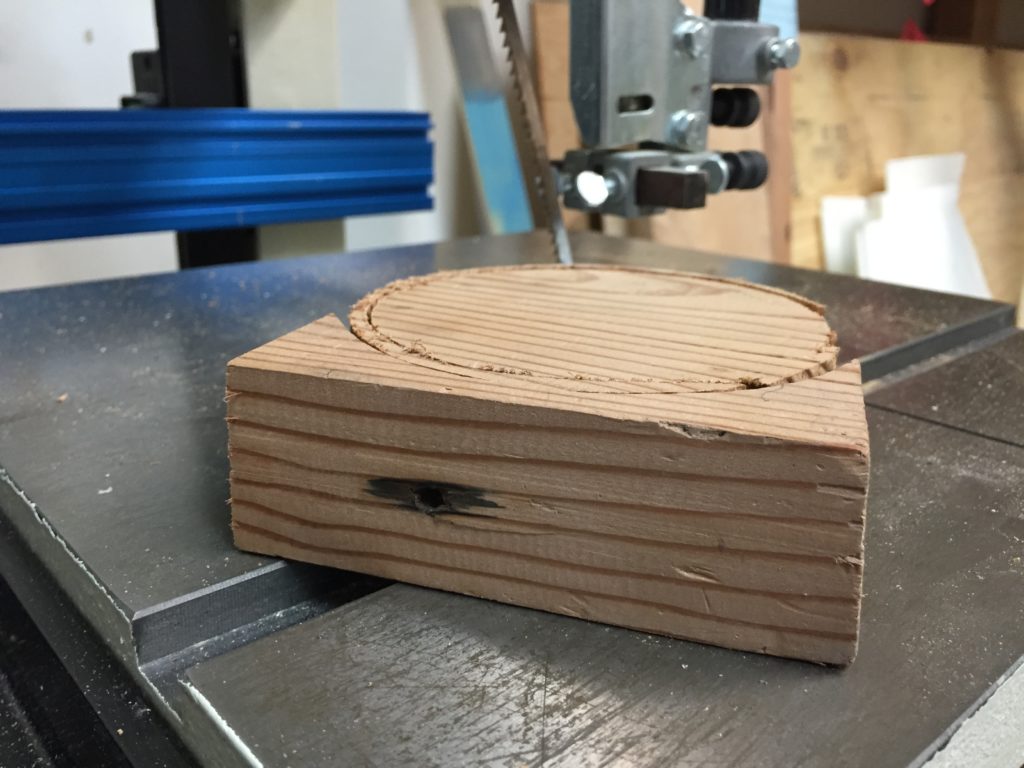
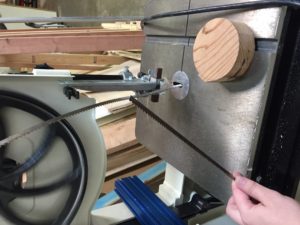
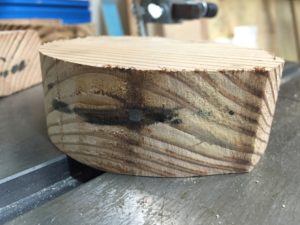
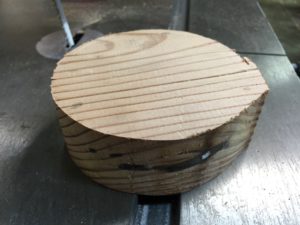
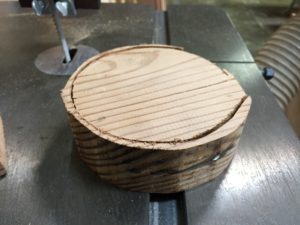
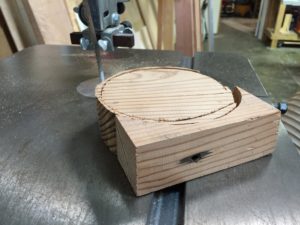
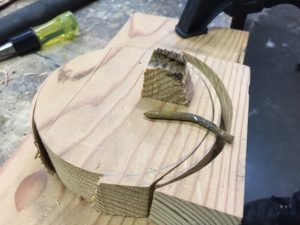
This is an excellent cautionary tale. A lively discussion ensued about reclaimed wood in the woodshed on the AMT Slack Team #woodshop channel. We are most likely doing some separate storage in the area and getting a metal detector.